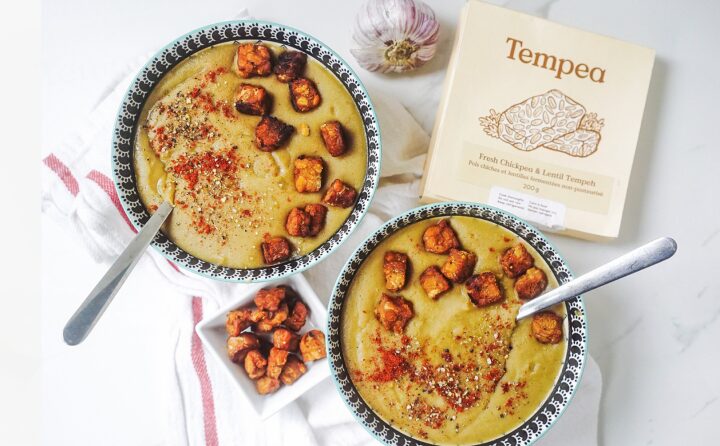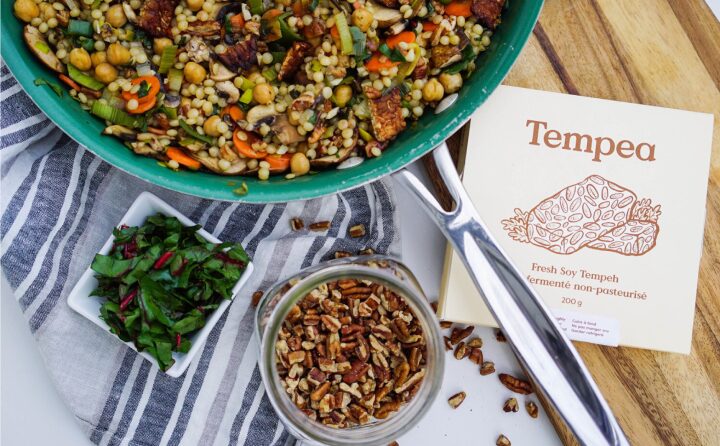Tempeh 101
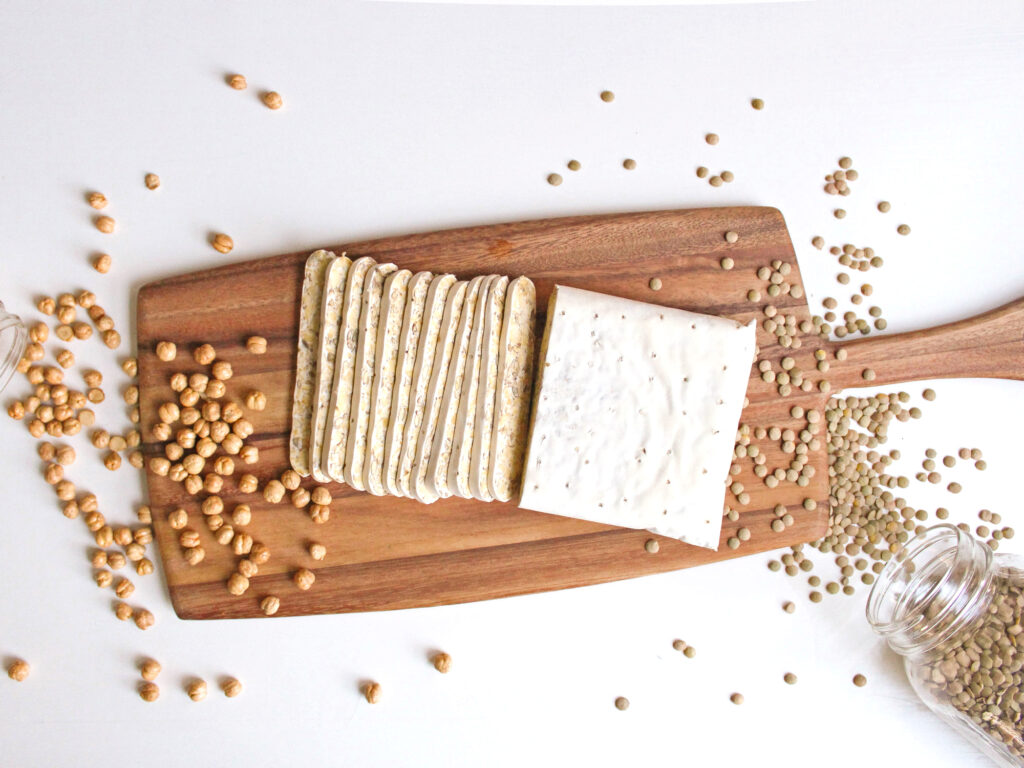
What is Tempeh?
Tempeh is a popular food item in Indonesia traditionally made with soy as a staple source of protein. It’s believed to have originated in the Indonesian island of Java many centuries ago and is still enjoyed by the entire population to date.
Unlike most fermented food that’s made with bacteria, tempeh uses a mould culture called Rhizopus. It produces a white outer layer as the mould’s mycelia spreads and grows in and around each soybean. As a result, this network of mycelia is what holds the product together into a patty-like consistency.
In Indonesia, tempeh is traditionally fermented in ambient temperatures (30–31°C for 24–48 hours) while wrapped in banana leaves. Fresh tempeh will have a yeasty, mushroom-like aroma and a mild, nutty flavour. Just like fruits and veggies, fresh tempeh is always best. Because it is a live product, fresh tempeh will continue develop stronger flavours as it matures.
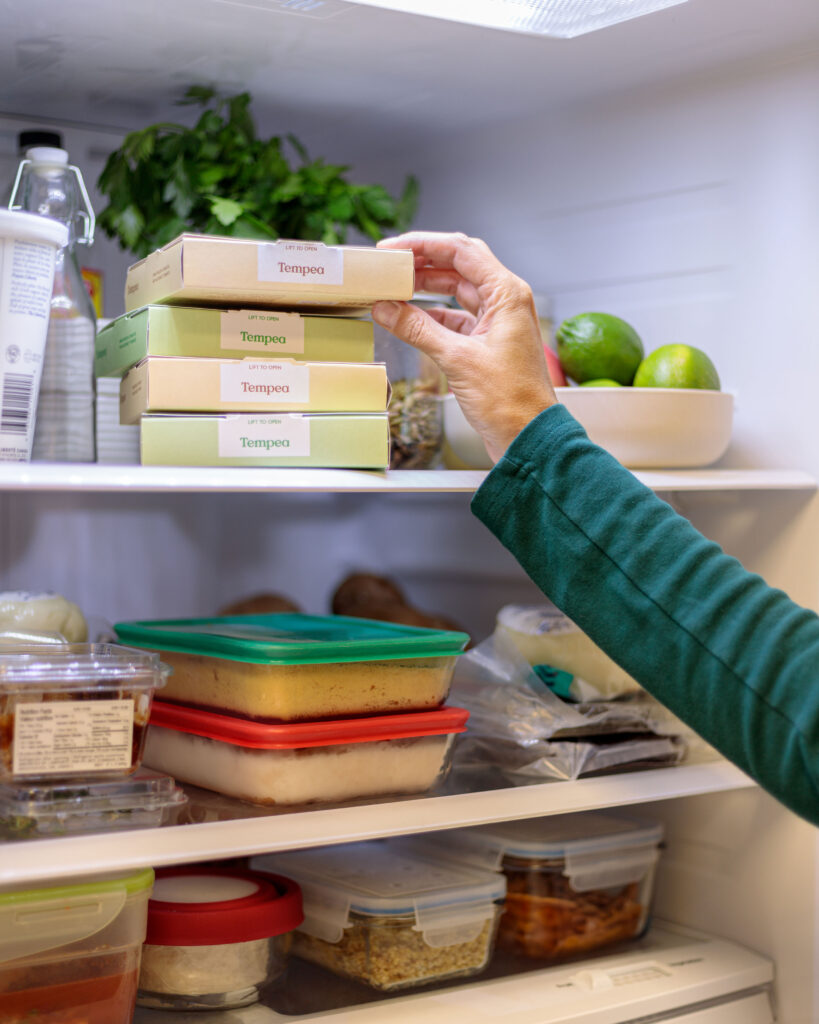
Storage & Handling
The product must be kept refrigerated (1 to 4°C) and is best enjoyed within 5-7 days. During this time, there may be changes in the product’s appearance: the white mould may turn yellowish or have black spots. Because it is a live product, the culture will continue to mature. Black spots appear when the Rhizopus mold creates spores; do not be alarmed, they are safe for consumption! If you are not cooking your tempeh right away, you can also freeze it for 3 months with minimal changes to texture.
DAY 1
- White, fuzzy mold on the outside.
- Yeasty and mushroom-like aroma.
- Firm to the touch.
DAY 5 (Refrigerated in packaging)
- White mold still coating the beans.
- Stronger yeasty aroma.
- Slightly firm.
DAY 7 (Refrigerated in packaging)
- Brown beans visible, white mold fading.
- Off odour.
- Still slightly firm.
SPOILED TEMPEH
- Dark brown beans, hardly any white mold.
- Sharp off odour, may also have slime.
- Soft and mushy.
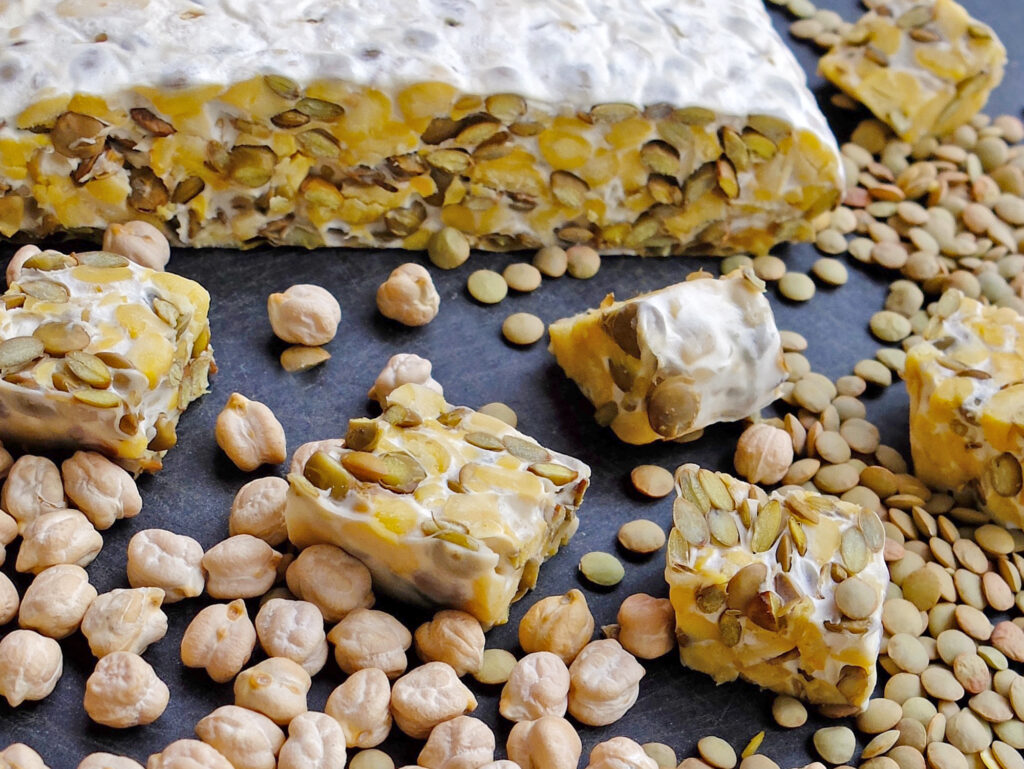
Nutrition Fact
SUPERFOOD! That’s what tempeh is since every pack has:
It’s also low in FODMAPs if served plain
(may also depend on accompanying ingredients).
More questions?
Cooking Basic
1
BASIC TEMPEH MARINADE
- 1/4 cup soy sauce or tamari
- 1-2 tbsp. lime juice
- 3 garlic cloves, minced
- Salt, pepper & spices to taste
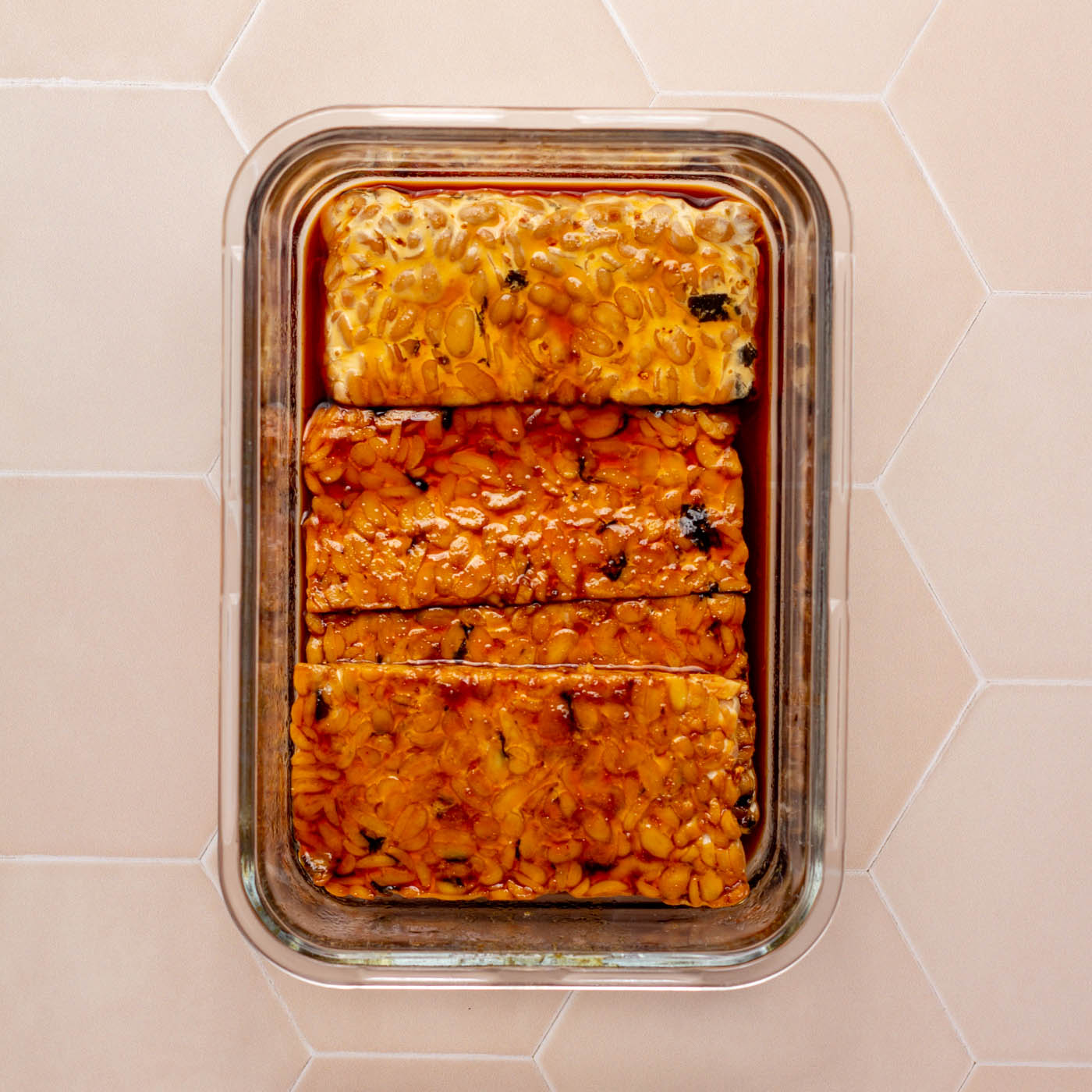
2
THREE STEPS TO PAN-FRYING
- Heat oil in a pan (be generous with good quality oil).
- Fry to golden brown colour for 45 seconds to 1 minute on each side at medium high heat until crispy.
- Season while hot!
3
THREE STEPS TO BAKING
- Marinate tempeh between 15 minutes and 4 hours.
- Bake at 350° for 20 minutes, flipping once mid-way through.
- Sear in skillet to brown if desired.
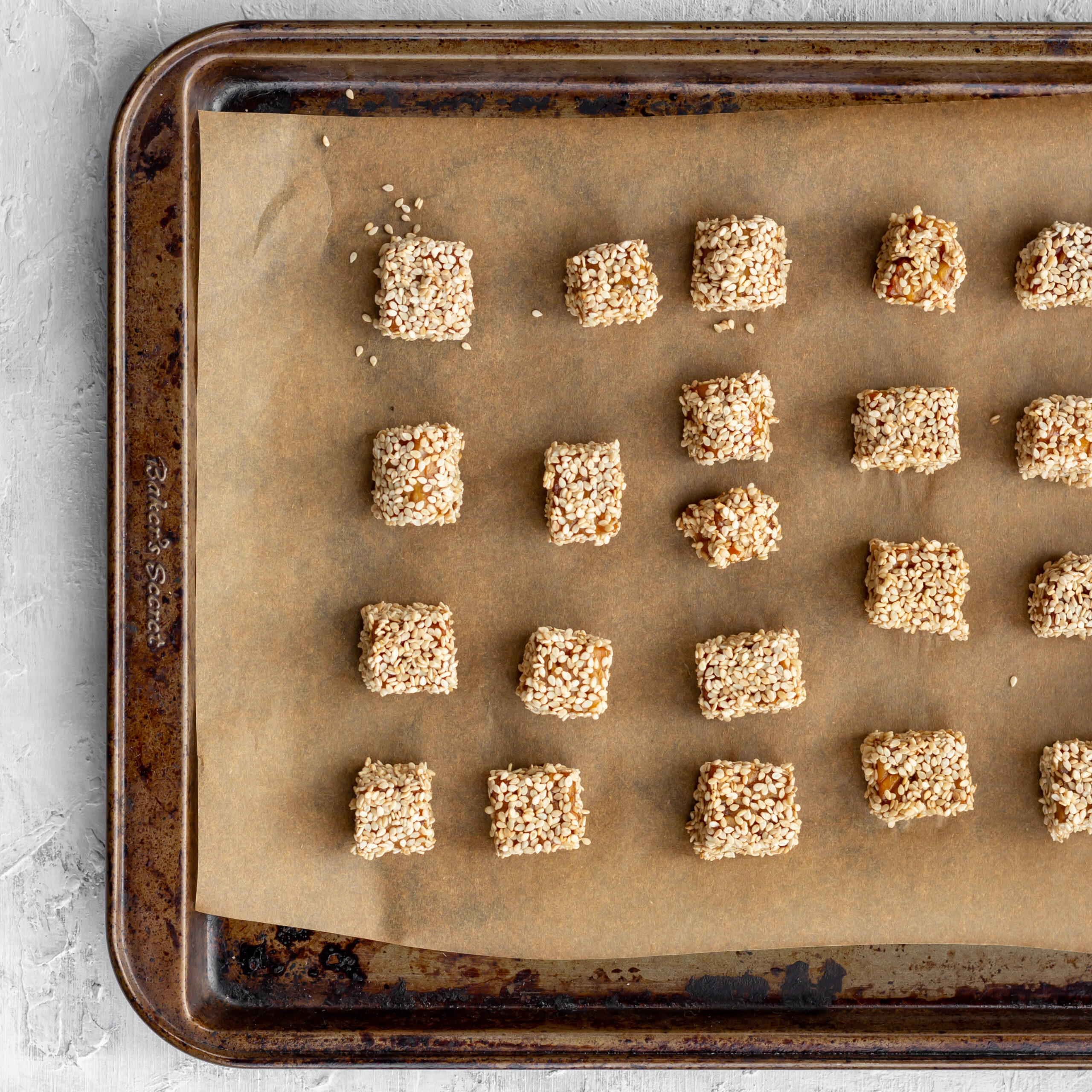
Suggested Uses
Tempeh is an excellent flavour sponge thanks to its porous nature. Unlike tofu, it’s not water-logged so it has a firmer, “meatier” texture. The fermentation process also brings out a lot of savoury and nutty elements that you miss out on in tofu. We highly recommend brining and marinating it for a couple minutes — it doesn’t take long for tempeh to absorb all that flavour!
In general, tempeh loves dry heat so you can’t go wrong with frying, grilling, or baking. You can also add it to your favourite curry, salad, stir-fry, or wrap… Tempea can do it all!
Scroll through our collection of recipes and our social channels for stories from our test kitchen (we never outgrew playing with our food).


